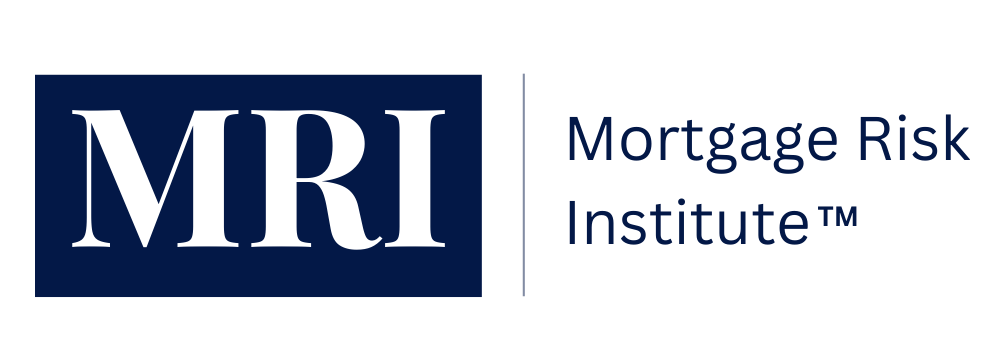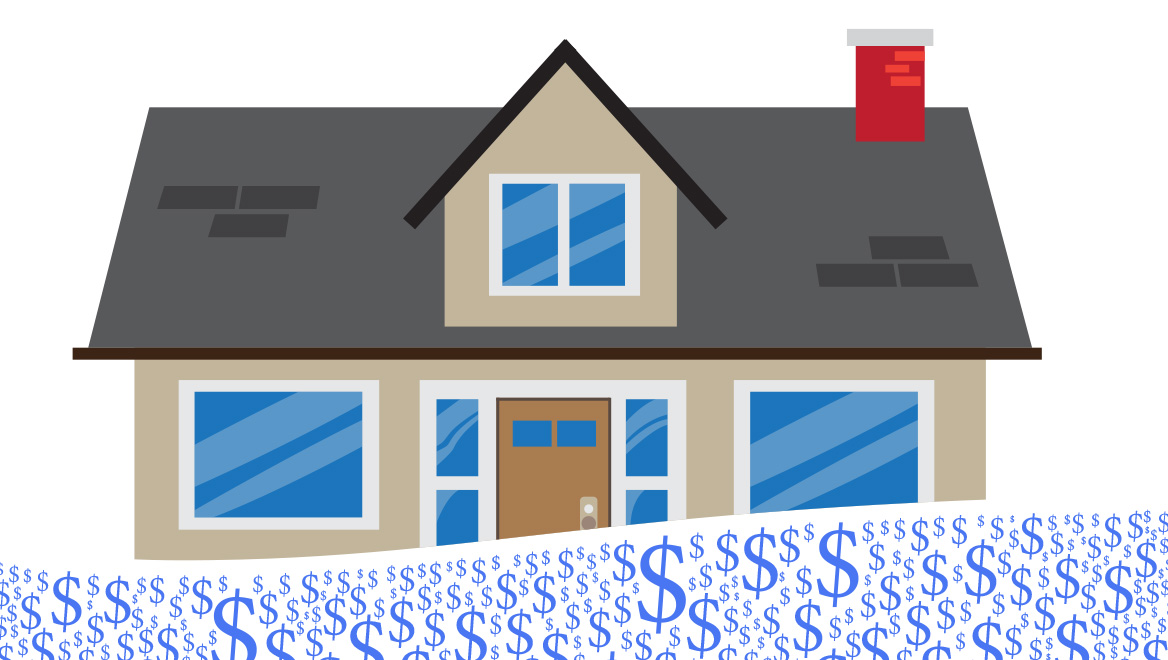
Whether it’s shockingly higher premiums or difficulty finding coverage at all, businesses and homeowners everywhere are affected by today’s unforgiving insurance market. Because insurance is an indispensable tool used by banks to mitigate lending risk, they could feel the impact too. The RMA Journal has launched this series to examine how. This installment discusses three ideas for banks to consider as borrowers feel the strain of more expensive and difficult-to-secure property coverage.
Make Insurance Costs an Underwriting Focus
A new report prepared for RMA’s Climate Risk Consortium by McKinsey notes that, for lenders, “insurance is a critical consideration in transaction-level decisions for residential real estate.” That being the case, it says, “as concerns rise about the availability and affordability of homeowners’ insurance, banks need to consider additional protections at origination and over the loan term.” One example: “Consider different debt-to-income (DTI) requirements at origination … to account for the rising insurance premiums borrowers may need to pay throughout the loan term.”
While no one wants to pay more for insurance, for many bank customers the surge in premium prices is little more than an unpleasant increase in household expenses or the cost of doing business. But for borrowers that are in locations where prices are rising most rapidly, already under financial strain, and/or facing particular challenges because of their industry subsegment, a big increase in insurance costs could have material effects.
“Higher insurance rates are compounding the financial pressure facing office property owners,” said Cristian de Ritis, senior director and deputy chief economist at Moody’s Analytics. “Elevated interest rates are causing mortgage payments to rise while growing vacancy rates are limiting the ability of landlords to increase rents. The combination of higher debt servicing costs, higher insurance premiums, and low (or falling) rent growth is increasing the risk of default.”
According to a recent note by commercial real estate-focused Terrydale Capital, “multifamily also feels the pressure of increased insurance costs, with owners unable to pass the extra costs to end users through rent increases as rental increase spikes have already been a major point of contention.” A 2023 Moody’s report based on an analysis of 100,000 properties across the U.S. found that, since 2017, multifamily has been the commercial real estate property type most likely to be hit with annual insurance increases of more than 10%.
Even if a business borrower can find or renew insurance at a similar premium as the previous year, an element of the policy could still present substantial lender risk: the deductible. If the worst occurred, could the borrower actually pay the deductible with available funds? A recent report in Risk & Insurance noted that while “the commercial property market shows signs of improvement” this year, “commercial property insurance deductibles have also seen changes, with water damage deductibles exceeding $100,000 for mid-to-high-rise buildings” and some carriers seeking $250,000 or more.
At a recent gathering of RMA’s Community Bank Council, members said lenders need to be aware of the deductible business borrowers would pay, and of how paying a substantial deductible would affect their financial outlook. The council suggested a lending policy that would restrict lending when deductibles exceed set thresholds.
James Lentino, chief risk officer at Rosemont, Illinois-based Wintrust Bank, said higher insurance premiums have “cash flow implications on our borrowers that need to be considered and factored into underwriting and stress testing—as well as ongoing monitoring and assignment of risk ratings.”
In the current environment, banks may also want to be cognizant of any exclusions or reductions in coverage their borrowers might be accepting as they seek to counteract rising insurance prices by purchasing lower-quality policies. De Ritis said the effects of rising insurance costs on bank risk are not limited to the collateral covered by the insurance. If higher premiums make it harder for households to make ends meet, he said, that could “increase default risks across lending sectors.”
“Lenders in adjacent consumer credit products such as credit cards and personal loans need to pay close attention to rising insurance costs,” he said, adding that “the higher expense may limit the financial resources consumers and businesses have to pay their loan obligations.”
“Banks need to be aware of this reality and recognize where their loans are in the payment hierarchy of their borrowers,” de Ritis said. “Households may prioritize paying their mortgages and insurance premiums over other unsecured debts such as credit cards and personal loans given the downside consequences of losing a home to foreclosure.”
“Including measures of insurance and other financial obligations in credit default models may provide a more accurate signal of default risk,” he said. “Lenders may look to mitigate their risk exposure by reducing credit lines, increasing servicing activity for loans already on their books, and tightening standards for new loan originations.”
Plan for Continuing Insurance Market Stress
“Historically, insurance prices follow property values,” de Ritis said. Sometimes that means when property values drop due to market forces, so do insurance rates. But that may not be the case going forward. “With climate risk expected to increase the frequency and intensity of storms, heat waves, and other meteorological events, the cost to insure properties will likely continue to rise even with modest reductions in property values,” he said.
Analysis supporting de Ritis’ view abounds. Two examples: First Street Foundation, a nonprofit that assesses and reports on the potential impact of climate change, has projected that the number of U.S. structures destroyed in wildfires will double over the next 30 years, to about 34,000. And globally, reinsurer Swiss Re expects insured disaster losses to grow at a 5% to 7% annual clip, and potentially double, over the next decade.
Putting it another way, the Crowe piece says, “organizations should not assume that previous costs will match upcoming costs.”
Based on likely exposure to extreme weather, recent pricing trends, and state regulatory activity, banks can develop a view into how insurance premiums and availability will evolve by region. In its report, Moody’s said it had “identified the markets with the highest insurance costs and rate of cost inflation.”
“Credit modeling at a granular geographic level is an absolute necessity for assessing the impact of climate risk given the nonlinearity of losses that can occur,” de Ritis said. “Local economic data and forecasts are now available that permit banks to develop more granular credit models than were available in the past.”
At the same time, said Tom Gregory, an advisor to RMA’s Climate Risk Consortium, “Banks need to think carefully about the impact homeowners insurance availability and pricing have on disadvantaged communities. Underwriting standards and portfolio risk management need to be consistent with banks’ fair-lending responsibilities to this customer segment.”
His recommendation follows a key point of regulatory emphasis. The legal and compliance section of the jointly issued “Principles for Climate-Related Financial Risk for Large Financial Institutions” says:
Management should consider how climate-related financial risks and risk mitigation measures affect the legal and regulatory landscape in which the financial institution operates. This should include, but is not limited to, taking into account possible changes to legal requirements for, or underwriting considerations related to, flood or disaster-related insurance.
Gathering climate information can help banks spot opportunities as well as minimize risks. “Banks may choose to expand in geographies and client segments with preferred risk profiles,” the McKinsey report says. And David Carlin, founder of the sustainability firm Cambium, said knowledge of how climate and insurance trends might play out on, say, a particular stretch of coastline could provide “a competitive advantage.”
A bank might have information about a community that is well protected to withstand storms and therefore less risky than other lenders would assume. “If I know something other people don’t, there’s a bit of arbitrage,” Carlin said.
Step Up Efforts to Ensure Bank Collateral Is Insured
Every homeowner knows that for as long as they have a mortgage, the lender requires insurance that covers what they owe. Banks typically check to make sure borrowers have not let insurance on collateral lapse—or hire outside services to do so. When insurance does lapse, banks force-place insurance at the homeowner’s expense until the homeowner can find an alternative.
“In the normal course of business, the risk of lapsed coverage leading to large [bank] losses is relatively low,” de Ritis said. But “the risk is worth considering given the high cost of force-placed insurance policies and the possibility that insurance could become unavailable for a large number of borrowers.”
“Bank credit teams should increase their focus on monitoring for insurance certificates,” Lentino said. “Many borrowers may begin letting policies lapse as they become more expensive. This aspect of credit administration is often overlooked and credit teams can be lax in monitoring for regular receipts of insurance certificates.”
Lentino said “banks can step up these administration and monitoring efforts by using advanced software” that ensures that the bank receives the necessary insurance certificates and, if not, reminds borrowers to secure insurance and send proof of it to the bank.
While monitoring can provide peace of mind, “it’s important to audit the current insurance monitoring service provider, whether it’s a third party or in-house,” the Crowe consulting firm advises. Questions to consider include: “How are renewal and cancellation notifications received and tracked?” and “What processes and procedures are in place to resolve notices or lack thereof in an efficient and timely manner?”
Banks can also buy blanket insurance policies that cover bank losses when uninsured collateral slips through the monitoring system and is damaged. However, the National Flood Insurance Program requires monitoring and does not allow the use of blanket policies.
Through a combination of factors that include climate, market conditions, and regulation, the price of insurance is rising rapidly, and seems poised to continue to increase in the future. In response, banks are considering the above measures and more to safeguard collateral and loans as the insurance market becomes increasingly unstable.
However the insurance market evolves, it is sure to influence the decisions of borrowers, lenders, and investors. To a large extent, Carlin said, “the insurance industry drives the financial decisions and allocation decisions the world makes.”
In more certain times, he said, that was “rarely discussed.”
Now that’s changing.



